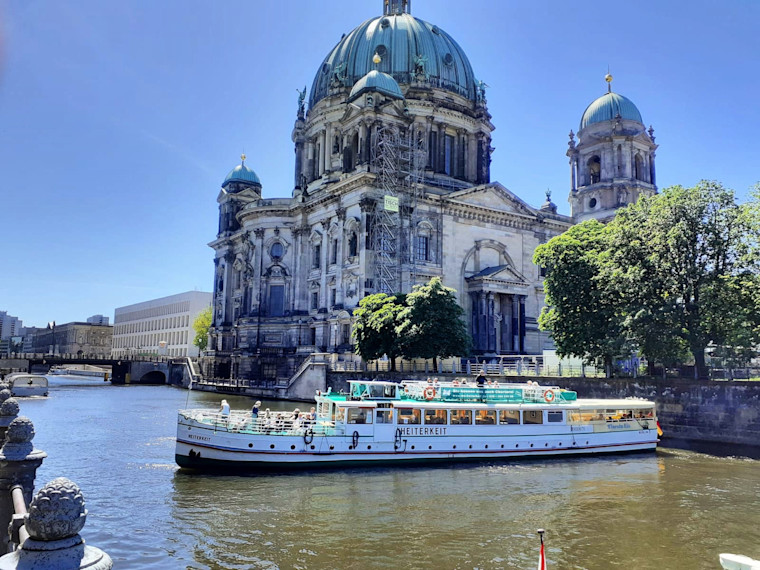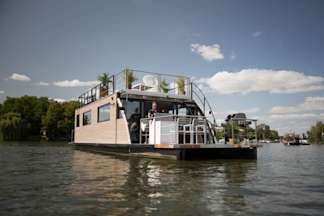Spree Cruise Berlin

Sights on a Spree Cruise from East to West
Two hours: Your boat trip leads through Berlin's wild east between Mühlendammschleuse (Fischerinsel) and the Rummelsburger Bucht. On this route you sail past notorious party locations such as the Kater Holzig, the Holzmarkt, the East Side Gallery, the Oberbaumbrücke, the Badeschiff, the Molecule Men and the Isle of Youth.
Three hours: This classic Berlin city tour takes you past the Berlin Cathedral, Museum Island, Central Station, the Chancellery and the House of World Cultures. On both banks of the Spree there are many beach bars such as Capital Beach, Sage Beach and the Strandbar Mitte. This is probably the best known route of Berlin.
Four hours: Your boat trip can take you towards Lake Müggelsee and New Venice (Berlin district Rahnsdorf). It's worth planning some extra time for a swim in Lake Müggelsee on this boat tour. The route takes about 90 to 120 minutes per direction.
Where do Spree tours start in Berlin?
Suitable boats for these routes start at the Historical Port Berlin (Fischerinsel) and Oberbaum Bridge. Some boat tours also start at Caprivi Bridge (Charlottenburg) and Friedrichstraße (Mitte). If you prefer to book tickets for a large passenger ship spontaneously, contact the big passenger ship companies "Stern und Kreis" or "Reederei Riedel".







































